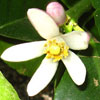 |
Citrus Growers Forum
|
| J.R. Peters Inc. Sold |
| Author | Message | |||||
|---|---|---|---|---|---|---|
| Millet Citruholic   Joined: 13 Nov 2005 Posts: 6657 Location: Colorado |
|
|||||
| igor.fogarasi Moderator   Joined: 11 Apr 2011 Posts: 559 Location: Novi Sad, Serbia |
|
|||||
| RyanL Citruholic   Joined: 07 Jan 2010 Posts: 410 Location: Orange County, North Carolina. 7B |
|
|||||
| harveyc Citruholic   Joined: 10 Jan 2007 Posts: 372 Location: Sacramento Delta USDA Zone 9 |
|
|||||
| Millet Citruholic   Joined: 13 Nov 2005 Posts: 6657 Location: Colorado |
|
|||||
| harveyc Citruholic   Joined: 10 Jan 2007 Posts: 372 Location: Sacramento Delta USDA Zone 9 |
|
|||||
| Millet Citruholic   Joined: 13 Nov 2005 Posts: 6657 Location: Colorado |
|
|||||
| harveyc Citruholic   Joined: 10 Jan 2007 Posts: 372 Location: Sacramento Delta USDA Zone 9 |
|
|||||
| Informations | |
 |
Our users have posted a total of 66068 messages We have 3235 registered members on this websites |
| Most users ever online was 70 on Tue 30 Oct, 2012 10:12 am | |
|
Powered by phpBB © 2001, 2005 phpBB Group
|